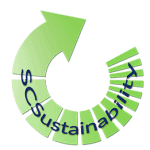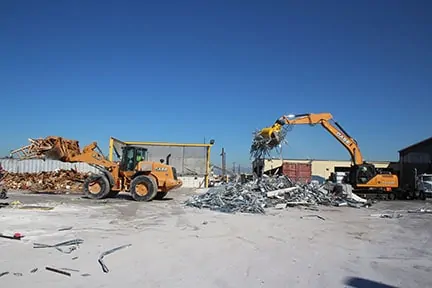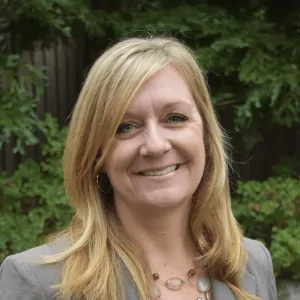

Hundreds of closed landfills in Wisconsin are required to perform groundwater monitoring and reporting. Typically, the frequency of monitoring, size of the monitoring well arrays, and the list of required parameters, was established many years ago as part of the landfill operating permit or closure plan approval. There is a potential to reduce, or terminate landfill monitoring when groundwater quality improvements are documented. WDNR guidance entitled “Reducing or Terminating Groundwater Monitoring at Solid Waste Landfills,” (PUB-WA 1013) provides instructions for requesting reductions to monitoring requirements.
Learn about new revisions to the WDNR guidance, developed with input from the WDNR’s Waste and Materials Management Study Group, which are intended to improve both the range of options for monitoring reductions and the process for requesting reductions. In addition to providing procedures for reduction in monitoring frequency, new revisions to the guidance include procedures for requesting reductions to the required number of monitoring wells and parameters. The revised guidance also provides instructions for communicating monitoring reduction requests to the WDNR review hydrogeologists.
Marc Rogoff sees unprecedented factors in play as “The Perfect Storm”—the banning of solid waste materials and imposing an almost unreachable contamination standard on bales entering China.
Read his recent article to get started on a solution relevant in your region and return again to follow our series of articles on what you can do to continue supporting or changing your program.
The article covers association actions, regional impacts, funding, and more.
National Waste and Recycling Association is sponsoring a FREE 90-minute webinar on December 6 at 3:00 pm ET. The webinar is highlighting the programs, strategies, and best practices of their six 2017 Recycling Award Winners.
The recipients will describe their unique blend of technologies, outreach, and program management that made a difference in their communities. The audience will have a chance to ask questions and find out how to implement these innovative ideas into their own operations and businesses.
Agenda:
More Solid Waste Management resources and success stories here.
The Association for the Advancement of Sustainability in Higher Education (AASHE) has awarded UNH the STARS Platinum rating in recognition of its sustainability achievements. STARS, the Sustainability Tracking, Assessment & Rating System, measures and encourages sustainability in all aspects of higher education. The Platinum STAR is the highest possible rating and held by only a handful of higher education institutions in the world.
Some highlights of UNH’s sustainability achievements:
“UNH committed to use renewable energy and move toward a sustainable energy economy early,” said Steve Hamilton, Sr. Vice President of SCS Engineers – Energy Division. “The decision to convert landfill gases to renewable energy kick-started a very successful program which is paying off for the University and in the surrounding community.”
Benefits include:

Author: Jennifer Mancini
In the EPA’s Region 9 U.S.-Mexico Border Program Progress Report, April-September 2016
The Campo Band of Mission Indians (CBMI) staff members are working with the EPA and SCS Engineers to address their waste management needs. SCS Engineers, an environmental engineering firm, was contracted by the Border Environment Cooperation Commission to work with CBMI in response to their request for technical assistance.
SCS Engineers was contracted to prepare a waste characterization study to support the development of a zero waste plan. The study provides critical information for designing and developing the future programs, policies, and facilities to effectively achieve a zero waste program.
Based on the findings, CBMI will assess their infrastructure needs, including consideration of a transfer station. SCS Engineers conducted field sampling to assess the Golden Acorn Casino in September 2016, the same month that Jeff Scott, EPA’s Land Divison Director visited Campo.
The Border 2020 Program is the latest environmental program implemented under the 1983 La Paz Agreement. It builds on the Border 2012 Environmental Program, emphasizing regional, bottom-up approaches for decision making, priority setting, and project implementation to address the environmental and public health problems in the border region. As in Border 2012, the new Program encourages meaningful participation from communities and local stakeholders.

Construction and Demolition Recycling Inc. is a California state certified C&D recycling facility which handles debris from the renovation, construction, and demolition of commercial interior spaces. CDR is the only facility in California that accepts only commercial interior debris, and the only facility in the country that can show a better than 80% diversion rate of these materials traditionally buried in landfills.
CDR’s staff also salvages usable items such as furniture, desks, chairs, file cabinets, and more, for reuse, donating more than 50 tons of these materials every month to not-for-profit agencies and other organizations. All of this allows CDR to divert over 80% of all inbound debris from landfills, a diversion rate that has been third party-verified by the Recycling Certification Institute.
The CDR facility in South Gate, California is a fully permitted C&D/inert debris processing and transfer facility. The facility is owned and operated by Interior Removal Specialist, Inc. (IRS), a demolition company that conducts demolition activities primarily of the interior of offices and other commercial buildings. Construction and Demolition Recycling Incorporated’s goal is to lead by example; showing that the diversion of tenant improvement demolition debris can be accomplished as efficiently and cost effectively as the debris from more traditionally recognized demolition debris. CDR has become the first and so far only recycling facility in Southern California that has earned Third Party Diversion Certification from The Recycling Certification Institute, making CDR the only facility in Southern California that is eligible to provide the US Green Building Council LEED Pilot Point for facilities with 3rd party verification.
Read the full article to learn some of the innovative strategies of this successful recycling company in “Construction and Demolition Debris Recycling Program; How CDR was Conceived and How CDR Remains Sustainable.”
Solid Waste Management, Sustainability, and Recycling Programs
SCS Engineers’ Tracie Onstad Bills and Leslie Lukacs were both selected to receive the California Resource Recovery Association’s (CRRA) prestigious Service Award this year. According to CRRA Executive Director, John H. Dane, the award recognizes “exceptional individual service to the organization and a contribution of time or resources beyond expectations.” That sounds like an SCSer alright.

Tracie Bills is SCS’s Sustainable Materials Management Director and is based in our Pleasanton, CA, location. She has been on the CRRA board for 10 years and has served in several leadership positions within the organization, including as its President for three years. Her expertise revolves around commercial recycling technical assistance, environmental purchasing, large venue and event zero waste programs, research and sustainability planning, garbage hauler franchise compliance and review, construction and demolition program / ordinance analysis and writing, climate inventory compilation, research and feasibility studies to help clients with comprehensive waste prevention and zero waste programs.
Leslie Lukacs serves as a Sustainable Materials Management Specialist in our Santa Rosa, CA, office. She has been on the CRRA board for 12 years and also served in a variety of leadership positions. She also founded CRRA’s Green Initiatives for Venues and Events technical council and was an instructor for CRRA’s Resource Management Certification Program for 5 years. Leslie specializes in the design and implementation of sustainable materials management and zero waste programs and is a pioneer in the greening of venues and events throughout the nation. Her extensive expertise in the logistics of zero waste, recycling, and composting programs, such as outreach management, business assistance, master planning, waste audits and characterization studies, extended producer responsibility ordinance preparation and implementation, compliance, grant writing, and administration are all key to successful long-term programs.
Both women were selected by the CRRA Board of Directors to be the 2016 recipients of the Service Award. The awards will be presented at the organization’s Annual Conference Awards Ceremony on August 9 in Sacramento.
CRRA is California’s statewide recycling association. It is the oldest and one of the largest non-profit recycling organizations in the U.S. CRRA is dedicated to achieving environmental sustainability in and beyond the state through Zero Waste strategies including product stewardship, waste prevention, reuse, recycling and composting. The organization provides its members with resources to advance local, regional and statewide waste reduction efforts which result in critical environmental and climate protection outcomes. Members represent all aspects of California’s reduce-reuse-recycle-compost economy and work for cities, counties, municipal districts, and businesses as well as hauling companies, material processors, non-profit organizations, state agencies, and allied professionals.
By Michelle Leonard, Solid Waste Planning and Recycling; Sustainability
National Expert
The term describes the desired end-state and a call-to-action rethinking what we regard as trash as potentially valuable resources. The overall goal of zero waste planning is to establish the goal of diverting at least 90 percent of the waste generated by all sources from a landfill.
Zero Waste is to:
Communities across North America have embraced the concept of Zero Waste, some by adopting a Zero Waste goal or policy, and others by completing a Zero Waste Plan. The plan includes implementing zero waste programs and infrastructure in a manner most sustainable for the community. Many communities establish a long-term goal of Zero Waste by setting interim goals to achieve and benchmark measuring progress. Goals may be quantified over years, by percentages, or by environmental factors relevant to your community.
There are several factors critical to sustainable Zero Waste programs.
Phasing in programs encourages acceptance of new policies, programs, and facilities, and the behavior modifications that come with them. Instead of continuing to focus on results at the end of the process, we find ways to fulfill the equation “waste = resource” within our industrial and societal systems. This mindset change helps to lead us to more systems that eliminate wastes to the environment, avoiding systematic deterioration of the environment. These systems are modeled by nature as the most efficient, less costly, and most profitable ways to move toward Zero Waste.
Programs that contribute to Zero Waste include upstream policies and programs. Over 71% of the waste generated happens before products and materials enter our homes, offices, schools and institutions. Upstream policies and programs aim to reduce the volume and toxicity of discarded products and materials and promote low-impact or reduced consumption lifestyles.
Producer Responsibility is an upstream activity, including advocacy at the state level and implementation of local ordinances for hard to handle materials, such as pharmaceuticals, sharps, batteries, CFLs. Local jurisdictions can support state legislation for Extended Producer Responsibility for materials such as carpet paint, etc.
Downstream programs aim to ensure the highest and best use of products and packaging at the end of their useful lives. They establish a hierarchy of:
Managing these materials will most likely require a combination of facilities which may include:
The issue of how Waste to Energy fits into a Zero Waste system has been a hotly debated topic at many Zero Waste conferences, workshops, and planning sessions. The Zero Waste International Alliance includes in its definition “no burning or burying”. However, even the most aggressive, advanced Zero Waste system will still have some residual materials, and these materials will need to be managed. Some cities that have adopted Zero Waste plans and/or policies include waste to energy in their strategic plans. These cities recognize that Zero Waste policies and programs will achieve a high diversion rate, but they also acknowledge that a portion of the waste stream residuals will need to be disposed or processed. For these cities, waste to energy, or another alternative technology facility will fill that need, and will further reduce the use of landfill disposal.
Learn more about Sustainable Materials Management
by Tracie Onstad Bills, Northern California Director, Sustainable Materials Management at SCS Engineers
For many years source separation was the primary method for recycling. However, technology has changed how recyclables are collected and processed. China, the largest importer of materials for recycling now strictly enforces regulations on importing contaminated materials for recycling into the country. China’s Operation Green Fence puts restrictions on what material China will accept, rejecting materials that don’t meet higher standards of cleanliness; that means rejected materials get buried in a landfill instead of being recycled.
Regardless of the type of recycling program, the biggest challenge here at home is now minimizing contaminated recycling material. Communities are struggling to meet diversion goals and provide materials to local recyclers that are free of common contaminants such as liquids left in containers or motor oil. My SCS team has assisted communities in the last few years to address contamination issues and I’d like to share what works best to kick start addressing the issue at home.
Recycling Assessments: Conduct a visual and physical characterization study to identify contamination levels using one of these two methods for the evaluation:
Recycling Technical Assistance: Meet with local businesses and perform a walk-through of their facility to collect baseline waste assessment and material collection infrastructure information. This information can then be used to provide customized recycling and composting recommendations, and implementation support such as employee training sessions, providing signage and collateral, referrals, and multi-lingual outreach services.
Review and Analysis of Community Recycling Programs: Review and analyze your recycling program. An environmental engineer can provide recommendations and assessments on how a recycling program can be enhanced to reduce the quantity of contaminated materials. Services typically include everything from examining outreach materials to the flow of the recycling from generation to transport to processing.
Planning and Implementation of Behavior Change Programs: There is value in providing comprehensive programs and explicit outreach materials for increasing the probability of cleaner recycling. Behavior change programs focus on planning and implementing programs that identify key triggers to encourage action in the community. These programs help communicate the importance and value of specific activities to the community and cross any age and cultural barriers.
Contamination is a global problem and is challenging, but there are steps to minimize the problem in your community.

About Tracie Onstad Bills
Tracie Onstad Bills has been in the Environmental and Resource Material Management Field for over 20 years. Her expertise revolves around commercial recycling technical assistance, environmental purchasing, large venue and event zero waste programs, research and sustainability planning, garbage hauler franchise compliance and review, construction and demolition program / ordinance analysis and writing, climate inventory compilation, research and feasibility studies to help clients with comprehensive waste prevention and zero waste programs. Ms. Bills has a BA in Environmental Science from San Jose State University, is a CRRA Board member and belongs to the SWANA Gold Rush Chapter, National Recycling Coalition and the Northern California Recycling Association. Contact Tracie here.
Learn more on the SCS service pages and read SCS project case studies from across the nation to help fine tune your program: